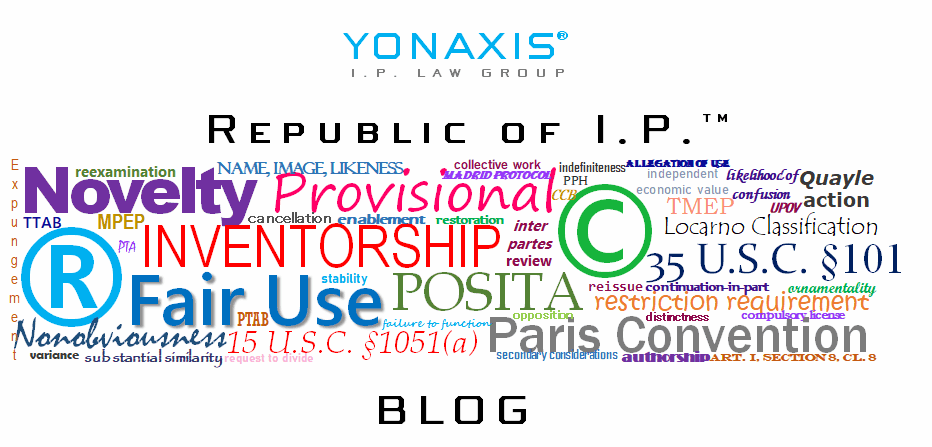The concept of distinctiveness is important under trademark law because it is one of the requirements for a federally registered mark. Distinctiveness goes to the strength of the mark. In theory, the more distinctive a mark, the more likely it is capable of identifying and distinguishing against all other sources of goods and services used in commerce.
The four categories along the distinctiveness continuum are: 1) arbitrary and fanciful, 2) suggestive, 3) descriptive, and 4) generic.1
Generic marks are not eligible for trademark protection because a generic mark refers to the genus of products or services, as opposed to signifying a particular unique source.
Merely descriptive marks merely describe an ingredient, quality, characteristic, function, feature,
purpose, or use of an identified good or service.2 Merely descriptive marks are not deemed distinctive, by itself, and cannot be registered. Merely descriptive marks will be refused registration in an Office Action in what is known as a Section 2(e)(1) refusal.3 However, there are work-arounds for registering a merely descriptive mark, including filing for registration under Lanham Act’s Section 2(f) (acquired distinctiveness) where the mark has been in use in commerce for five years; registration on the Supplemental Register; or arguing the mark has a higher level of distinctiveness.
Suggestive marks are words or terms that as applied to goods or services, require some level of “imagination, thought, or perception to reach the conclusion as to the nature of those goods or services.”4 Examples of suggestive marks include NETFLIX for Internet-based streaming services and AIRBUS for airplanes.
Fanciful marks are completely invented words or terms, created for the purpose of functioning as a mark. Fanciful marks are unknown or out of common vernacular. Examples include PEPSI, KODAK and GOOGLE. Arbitrary marks are common words or terms with a specific definition, but do not suggest some characteristic or feature of the goods or services; these are “known words used in an unexpected or common way.”5 Examples include APPLE for smartphones or NIKE for shoes. Fanciful and arbitrary marks are the highest on the distinctiveness continuum.
Distinctiveness is important because it creates high consumer recognition of the mark as applied to a particular good or service. In turn, inherently distinctive marks can create strong marks; the stronger the mark, the higher the legal protections and the harder for an infringer to defend an infringement suit. For further questions, please contact us at Yonaxis I.P. Law Group.
- Abercrombie & Fitch Co. v. Hunting World, Inc., 537 F.2d 4 (2d Cir. 1976). ↩︎
- In re TriVita, Inc., 783 F.3d 872, 874, 114 USPQ2d 1574, 1575 (Fed. Cir. 2015); In re Oppedahl & Larson LLP, 373 F.3d 1171, 1173, 71 USPQ2d 1370, 1371 (Fed. Cir. 2004). ↩︎
- 15 U.S.C. 1052(e)(1) (no mark shall be refused registration . . . (e) “unless it consists of (1) when used on or in connection with the goods of the applicant is merely descriptive or deceptively misdescriptive of them”). ↩︎
- In re N.C. Lottery, 866 F.3d 1363, 1367, 123 USPQ2d 1707, 1709 (Fed. Cir. 2017); ↩︎
- Nautilus Group, Inc. v. Icon Health & Fitness, Inc., 372 F.3d 1330, 1340, 71 USPQ2d 1173, 1180 (Fed. Cir. 2004). ↩︎
